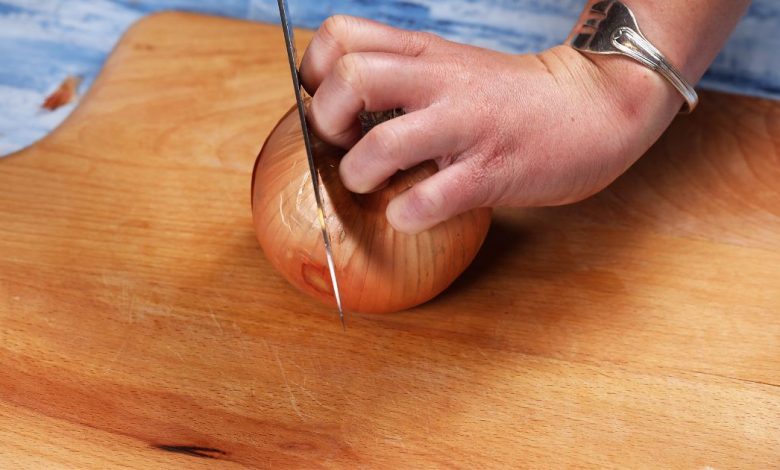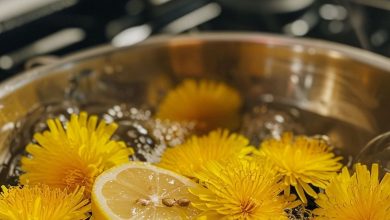The best tips of chopping onions without crying

Onions are a kitchen staple known for adding a burst of flavor to dishes around the globe. However, the tears they bring can make the cooking process less enjoyable. Have you ever wondered why chopping onions makes you cry and how you can avoid this teary predicament? Well, you’re in luck! This guide will walk you through some of the best tips and tricks to chop onions without the tears.
ADVERTISEMENT
Why Do Onions Make You Cry?
The Science Behind the Tears
When you chop an onion, you break its cells, releasing a compound called sulfenic acid. This compound quickly rearranges itself into syn-Propanethial-S-oxide, a volatile sulfur compound that floats up towards your eyes. Your eyes react to this irritant by producing tears to wash it away.
ADVERTISEMENT
The Role of Sulfur Compounds
Sulfur compounds are responsible for the pungent smell and the eye irritation. These compounds are essential for the onion’s flavor profile but can be a nuisance when they turn into airborne irritants.
ADVERTISEMENT
Chill the Onion
How Cold Temperatures Reduce Irritants
Chilling onions slows down the enzyme reaction that creates the tear-inducing compounds. When the onion is cold, fewer sulfur compounds are released into the air.
Steps to Chill Onions Effectively
- Place the onion in the refrigerator for about 30 minutes before chopping.
- For a quicker chill, place the onion in the freezer for 10-15 minutes.
- Proceed with chopping the onion while it is still cold.
Use a Sharp Knife
Importance of Knife Sharpness
A sharp knife causes less cell damage to the onion, which means fewer irritants are released. A dull knife crushes the onion cells, leading to more tears.
Tips for Maintaining a Sharp Knife
- Regularly hone your knife using a honing steel.
- Sharpen your knife with a whetstone or a professional sharpening service.
- Store knives properly to avoid dulling the blades.
Cut Under Running Water
How Water Helps Dissipate Irritants
Cutting onions under running water or in a bowl of water can help to dissipate the sulfur compounds before they reach your eyes.
Practical Tips for Cutting Under Water
- Position your cutting board near the sink.
- Let a gentle stream of cold water flow over the onion as you chop.
- Alternatively, submerge the onion in a bowl of water while cutting.
Use Onion Goggles
How Onion Goggles Work
Onion goggles are designed to create a seal around your eyes, preventing the irritants from reaching them. They work similarly to swimming goggles.
Pros and Cons of Using Onion Goggles
Pros:
- Effective at blocking irritants.
- Reusable and easy to clean.
Cons:
- Can be uncomfortable for some users.
- May look a bit silly.
Chop Quickly
Benefits of Quick Chopping
The faster you chop, the less time the onion has to release its tear-inducing compounds. Speed is key to minimizing exposure.
Techniques to Improve Chopping Speed
- Practice proper knife techniques to increase efficiency.
- Use a stable, non-slip cutting board.
- Arrange the onion pieces strategically for faster chopping.
Microwave the Onion
Effect of Microwaving on Enzymes
Microwaving an onion for about 30 seconds can deactivate some of the enzymes responsible for producing the tear-inducing compounds.
Step-by-Step Guide to Microwaving Onions
- Place the whole, unpeeled onion in the microwave.
- Microwave on high for 20-30 seconds.
- Let the onion cool slightly before chopping.
Cook the Onion Whole
Benefits of Pre-Cooking Onions
Cooking the onion whole, such as roasting or grilling, can reduce the concentration of sulfur compounds, making them less likely to cause tears.
Methods for Cooking Onions Whole
- Roasting: Place the whole onion in the oven at 375°F (190°C) for about 30-40 minutes.
- Grilling: Wrap the onion in foil and place it on the grill for 20-30 minutes.
- After cooking, let the onion cool before chopping.
Distract Your Senses
How Sensory Distraction Works
Distracting your senses can reduce the brain’s response to the irritants. Chewing gum, holding a piece of bread in your mouth, or breathing through your mouth can help.
Various Distraction Techniques
- Chewing Gum: Chew gum while chopping to keep your mouth busy.
- Piece of Bread: Hold a piece of bread between your teeth to absorb some of the compounds.
- Breathing Techniques: Breathe through your mouth instead of your nose to reduce irritation.
Chew Gum
Why Chewing Gum Helps
Chewing gum encourages you to breathe through your mouth, which can help divert the irritants away from your eyes.
Best Practices for Chewing Gum While Chopping
- Start chewing gum a few minutes before you begin chopping.
- Choose a strong-flavored gum to keep your mouth occupied.
- Continue chewing throughout the chopping process.
Use a Fan
How Airflow Reduces Irritants
A fan can blow away the sulfur compounds before they reach your eyes, reducing the likelihood of tears.
Setting Up a Fan in Your Kitchen
- Place a small fan near your chopping area.
- Aim the fan so that it blows air across the onion and away from your face.
- Ensure good ventilation in the kitchen.
Soak the Onion in Water
Benefits of Soaking Onions
Soaking onions in water can dilute the sulfur compounds, making them less potent and reducing eye irritation.
Steps for Soaking Onions Before Chopping
- Peel and cut the onion in half.
- Place the onion halves in a bowl of cold water.
- Let them soak for 10-15 minutes before chopping.
Wear a Mask
Effectiveness of Masks
Wearing a mask can help filter out the sulfur compounds, preventing them from reaching your nose and eyes.
Types of Masks Suitable for Onion Chopping
- Surgical Masks: Easily available and can filter out irritants.
- Cloth Masks: Comfortable and reusable, though less effective than surgical masks.
- N95 Masks: Highly effective but might be overkill for kitchen use.
Chopping onions doesn’t have to be a tearful ordeal. By using these tips and techniques, you can keep your eyes dry and make your cooking experience more enjoyable. Whether you chill the onion, use a sharp knife, or try one of the many other methods, there’s always a solution.




